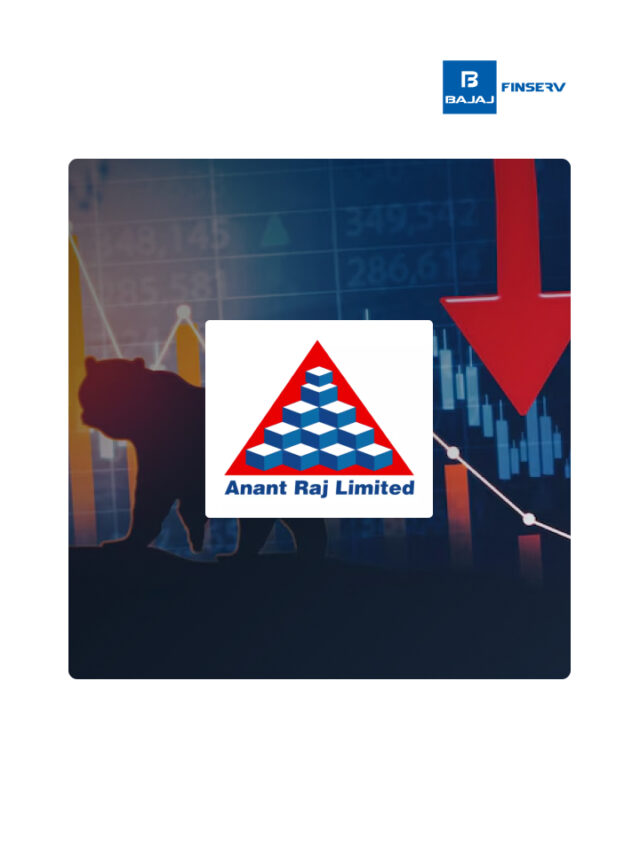Cement Sector in India
Last Updated on November 4, 2023 by BFSLTeam BFSLTeam

Cement, a fundamental component in construction, has been instrumental in shaping India’s modern infrastructural landscape. It’s an essential material, supporting the vast development, from towering city buildings to extensive highways crisscrossing the nation. India has always been renowned for its architectural wonders, from historical temples to grand palaces. However, in recent times, the role of cement in shaping the new India has become even more prominent. India is the second-largest cement producer globally, with China leading the list. With an annual production of around 300 million tonnes, India not only caters to its own substantial demand but also marks its presence by exporting to various countries. This impressive production not only highlights the scale at which the cement industry operates but also highlights its significant contribution to the nation’s economy. In this article, we’ll take you on a journey into the depths of the cement sector in India, revealing different aspects that might enhance your understanding of this vital industry.
Table of Content [hide]
History/Overview Of Cement Sector in India
The story of the cement industry in India began back in the early 20th century. A landmark event took place in 1904 when the first cement factory was set up in Chennai. This move, although a humble start, marked India’s growing interest in industrial growth. With time, many more cement factories appeared across India to meet the rising demand for construction. As the towns and cities expanded, and as more roads, houses, and buildings were planned, the importance of cement grew. In combination with this growth, the cement industry also evolved, adapting to serve the building and infrastructure needs better.
A significant shift occurred post-1991 when India opened its doors to more foreign businesses and investments. This economic decision positively impacted various industries, including cement. The industry saw an influx of international funds, which aided its growth. Moreover, during this period, advancements in cement-making techniques emerged, factories were able to produce more, and there was a conscious effort to ensure the cement was of top quality and eco-friendly.
As of now, India has an installed cement capacity of 553 MTPA (Million Tonnes Per Annum) but produces around 298 MTPA. This means we have the capability to make even more if required. India houses over 250 major cement plants. The importance of this industry to the economy cannot be understated, especially when it promises employment to millions of people.
Cement plays a foundational role in India’s development. Whether it’s the skyscrapers in big cities or the homes in the villages, cement is a crucial component. Notable projects, such as the vast ‘Golden Quadrilateral’ highway or the magnificent ‘Statue of Unity’—the world’s tallest statue—showcase the crucial role of cement in shaping India’s landscape.
List of Top 10 Cement Stocks
| S.No. | Company Name | Market Cap (in Cr) |
| 1. | UltraTech Cement Ltd | ₹ 2,36,584 |
| 2. | Grasim Industries Ltd | ₹ 1,21,784 |
| 3. | Shree Cement Ltd | ₹ 92,058 |
| 4. | Ambuja Cements Ltd | ₹ 82,851 |
| 5. | Dalmia Bharat Ltd | ₹ 38,228 |
| 6. | ACC Ltd | ₹ 35,266 |
| 7. | J K Cement Ltd | ₹ 23,768 |
| 8. | Ramco Cements Ltd | ₹ 22,982 |
| 9. | RHI Magnesita India Ltd | ₹ 14,092 |
| 10. | Nuvoco Vistas Corporation Ltd | ₹ 12,200 |
UltraTech Cement Ltd
As India’s undisputed leader in cement manufacturing, UltraTech Cement isn’t just a household name; it is a benchmark in the industry. Their vast presence across India with multiple manufacturing units ensures timely and efficient delivery. What truly sets them apart is their incredible production capacity, which, interestingly, surpasses many global cement companies. Their dedication to quality and consistent product performance has earned them numerous accolades over the years.
Also Read: UltraTech Cement Q2 Results
Grasim Industries Ltd
Operating under the esteemed Aditya Birla Group, Grasim Industries has a diverse portfolio that stretches beyond cement, but it’s in this sector that they’ve shown immense prowess. Their ability to continuously adapt and adopt innovative production methods is noteworthy. Over the years, Grasim has been recognised multiple times for its commitment to sustainability and efficient production techniques.
Also Read: Grasim Industries Share Price
Shree Cement Ltd
Originating from the vibrant state of Rajasthan, Shree Cement has, over the years, made a commendable mark in Northern, Eastern, and Western parts of India. What’s impressive is their consistent ranking among the top energy-efficient cement producers, a testament to their commitment to the environment and modern production methods. Their awards cabinet showcases several honours for sustainable practices.
Ambuja Cements Ltd
Ambuja Cements isn’t just a producer; it is a pioneer. Over the years, they’ve introduced a series of innovative cement products, tailored to India’s diverse construction needs. The company’s focus on community development and sustainability has been recognised with numerous national and international awards, making it a brand that doesn’t just sell cement but a vision.
Also Read: Ambuja Cements Q2 Results
Dalmia Bharat Ltd
Tracing back their roots over seven decades, Dalmia Bharat Ltd’s journey in the cement industry is both rich and inspiring. With a history so deep, their experience shines in every bag of cement they produce. The company is known for being a front-runner in adopting green manufacturing practices, which has earned them recognition as one of the most sustainable cement producers.
ACC Ltd
A name with a rich legacy, ACC Ltd, has been a part of India’s growth story for decades. With its rich history, the company has been instrumental in setting standards for cement production. ACC’s commitment to quality is well-recognised, with several projects across India showcasing the durability and strength of their product.
Also Read: ACC Ltd Q2 Results
J K Cement Ltd
Representing the spirit of strength and durability, J K Cement has secured its position as a dominant player, especially in Northern and Western India. Their various achievements include introducing water-resistant cement to the Indian market, a testament to their innovative spirit. Their production facilities, equipped with the latest technology, ensure every product is of the highest standard.
Ramco Cements Ltd
Innovation is at the heart of Ramco Cements. This company has been known for bringing technologically advanced cement varieties to the Indian market. Their emphasis on research and development has led to the creation of products that are both durable and eco-friendly. Their achievements in manufacturing and environmental sustainability have been recognised on various platforms.
RHI Magnesita India Ltd
Although a global giant in refractory products, RHI Magnesita’s Indian operations are commendable. Their strength lies in world-class manufacturing facilities that emphasise quality above all. Over the years, their contributions to the Indian cement industry have been marked by numerous milestones and recognitions.
Nuvoco Vistas Corporation Ltd
A relatively new entrant, Nuvoco Vistas has quickly established its foothold. Their approach to creating a better, safer, and more sustainable environment is evident in their products and practices. With manufacturing units spread across India, each facility showcases the company’s commitment to excellence and innovation.
Current Performance
To begin with, urbanisation is not merely a term; it’s an ongoing phenomenon in India. More and more people are moving towards cities, leading to an uptick in construction activities. Be it building houses, apartments, or even commercial spaces, cement is a crucial component, and its demand has been continuously on the rise.
Further, the government’s various projects have given a significant boost to the cement sector. Schemes like ‘Housing for All’ and the Pradhan Mantri Awas Yojana are not just names on paper; they are large-scale initiatives aimed at providing housing solutions to millions. These projects have meant that cement production and distribution have had to be ramped up, reflecting positively on the industry’s performance.
Moreover, improved transportation networks like highways, roads, and bridges in smaller towns demand a lot of cement. With the government’s push to enhance connectivity, the requirement for cement in these projects has been tremendous. The rapid development of metro rail projects in many tier-2 cities has been another source of demand for the cement sector. Cities like Lucknow, Kanpur, and Coimbatore, which didn’t have metro connectivity a few years ago, are now seeing these projects either completed or in the pipeline. Such infrastructural developments invariably lead to an increased demand for cement. The private sector’s contribution shouldn’t be underestimated. Many private developers and builders are coming up with residential and commercial projects, recognising the potential and growth opportunities.
Future Outlook Of Cement Sector in India
Let’s look ahead and see what the future holds for India’s cement industry. The signs point towards growth, and there are a few important reasons for this. Firstly, more people are moving to cities and towns in India. This means there’s a need for more homes, offices, schools, and other buildings. Simply put, when more buildings are made, more cement is used.
Next, the Indian government is investing a lot in making our cities and towns better. Projects like the ‘Smart Cities Mission’ and the ‘Atal Mission for Rejuvenation and Urban Transformation (AMRUT)’ are putting money into improving the cities. This means more construction and more demand for cement. It’s not just about the cities; even in villages and small towns, there are many new roads and houses being built, and they all need cement. In 2022, our country produced over 275 million tonnes of cement. And experts believe that by 2029, this number will jump to 404.11 million tonnes. That’s a growth rate of 5.51% every year.
Another important thing to remember is how connected the cement industry is to the country’s overall growth. The more the economy grows, the more cement we will need. With new technologies coming in, making cement is becoming easier and better. The industry can now produce more cement of better quality, which is good news for everyone.
Advantages of Investing in the Cement Sector
- Constant Demand: The inherent nature of cement as a core material for construction ensures that its demand remains consistent. From housing projects in burgeoning cities to rural infrastructural developments, cement is indispensable.
- Infrastructure Development: The government of India continuously emphasises infrastructure development, which directly influences the growth of the cement sector. Projects like highways, dams, and bridges always necessitate substantial cement consumption.
- Governmental Push: With schemes like ‘Housing for All’ and the push for constructing smart cities, the Indian government is actively promoting the use of cement. Such initiatives ensure that the cement industry will have sustained growth and demand.
- Urbanisation Trend: As more rural areas transform into urban hubs, the requirement for well-constructed residential and commercial spaces rises. This urban migration and expansion directly translate to an increased demand for cement.
- Economies of Scale: Due to the vastness of India’s landscape and the need for infrastructural development across its expanse, large cement companies can achieve economies of scale. This means they can produce cement at a lower average cost as production increases, benefiting from operational efficiencies.
- Potential for Export: India’s geographical location provides an advantage for exporting cement to African and Middle Eastern countries. As Indian cement companies uphold quality standards, they find a favourable market in these regions.
- Stable Pricing: The pricing of cement in India has remained relatively stable over the years, ensuring that sudden market fluctuations do not adversely impact the industry.
FAQs About Cement Sector in India
The cement sector remains foundational to the construction and infrastructure projects in India. As the government continues its push for urbanisation, housing, and infrastructure, the demand for cement invariably rises. This steady and predictable demand makes the cement sector an attractive investment option.
To begin investing in the cement sector, you first need a Demat account, which allows you to hold and trade shares. Once this account is set up through a registered broker, you can start purchasing stocks of the cement companies listed on stock exchanges.
The cement sector, like any industry, faces risks. These can be in the form of economic downturns, reduced spending on infrastructure, fluctuating raw material prices, and environmental regulations. However, a comprehensive understanding and a diversified investment approach can help manage these risks.
The cost of raw materials, especially limestone, coal, and power, significantly impacts the cement sector. If prices of these materials rise, it can increase production costs, potentially reducing the profit margins of cement companies.
Government initiatives like ‘Smart Cities’ and ‘Housing for All’ directly boost the demand for cement. As the government allocates more budget and resources towards infrastructure development, the cement sector invariably benefits from increased consumption.
Yes, the cement sector is a significant employment generator in India. From direct employment in manufacturing units to indirect employment in logistics, sales, and construction sectors, the cement industry provides jobs to a large number of people.
Sustainability is vital due to increasing environmental concerns. Cement production traditionally has a high carbon footprint. To address this, many companies are adopting eco-friendly practices, both to reduce their environmental impact and to adhere to stricter regulations set by governments and international bodies.










